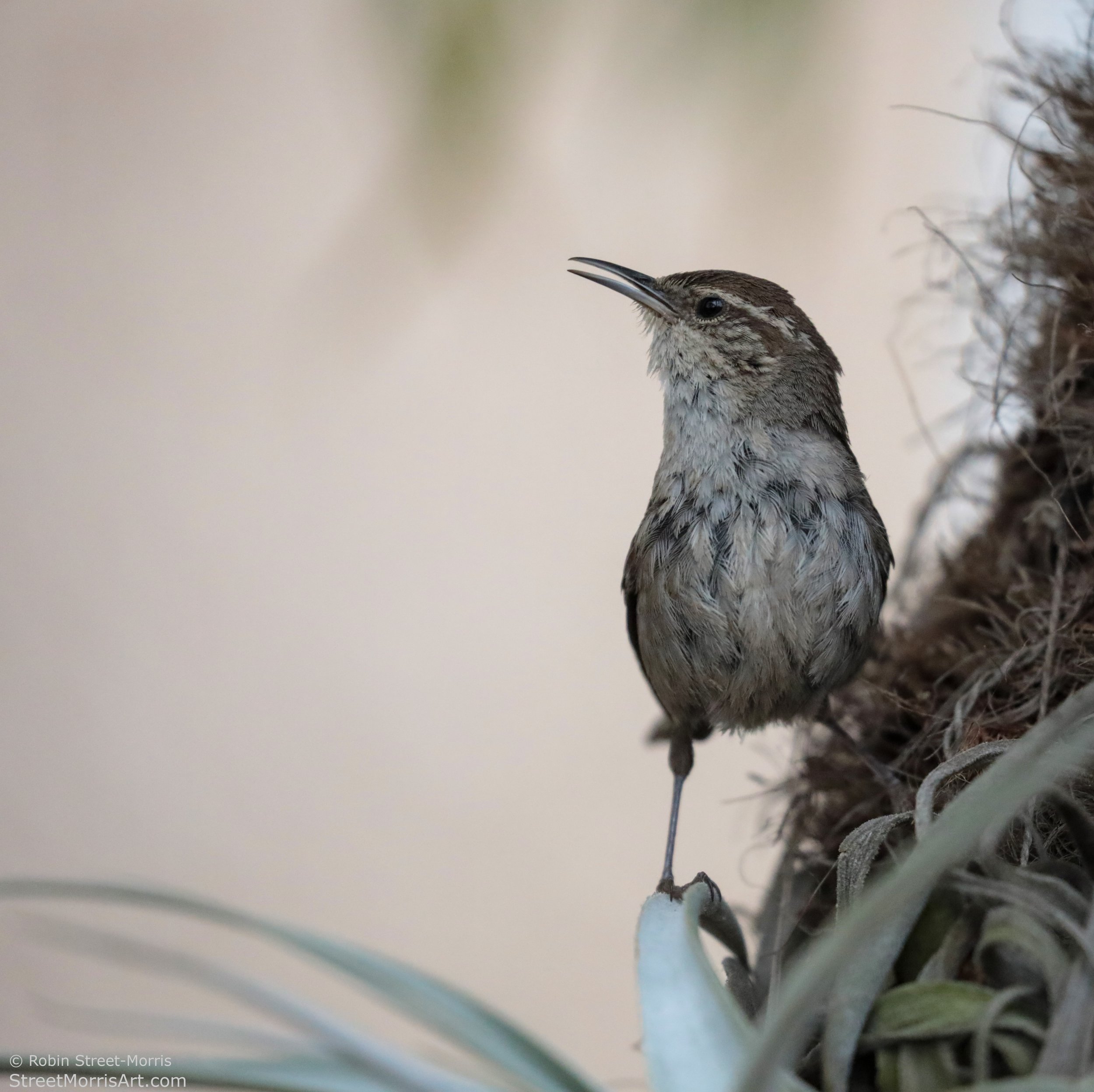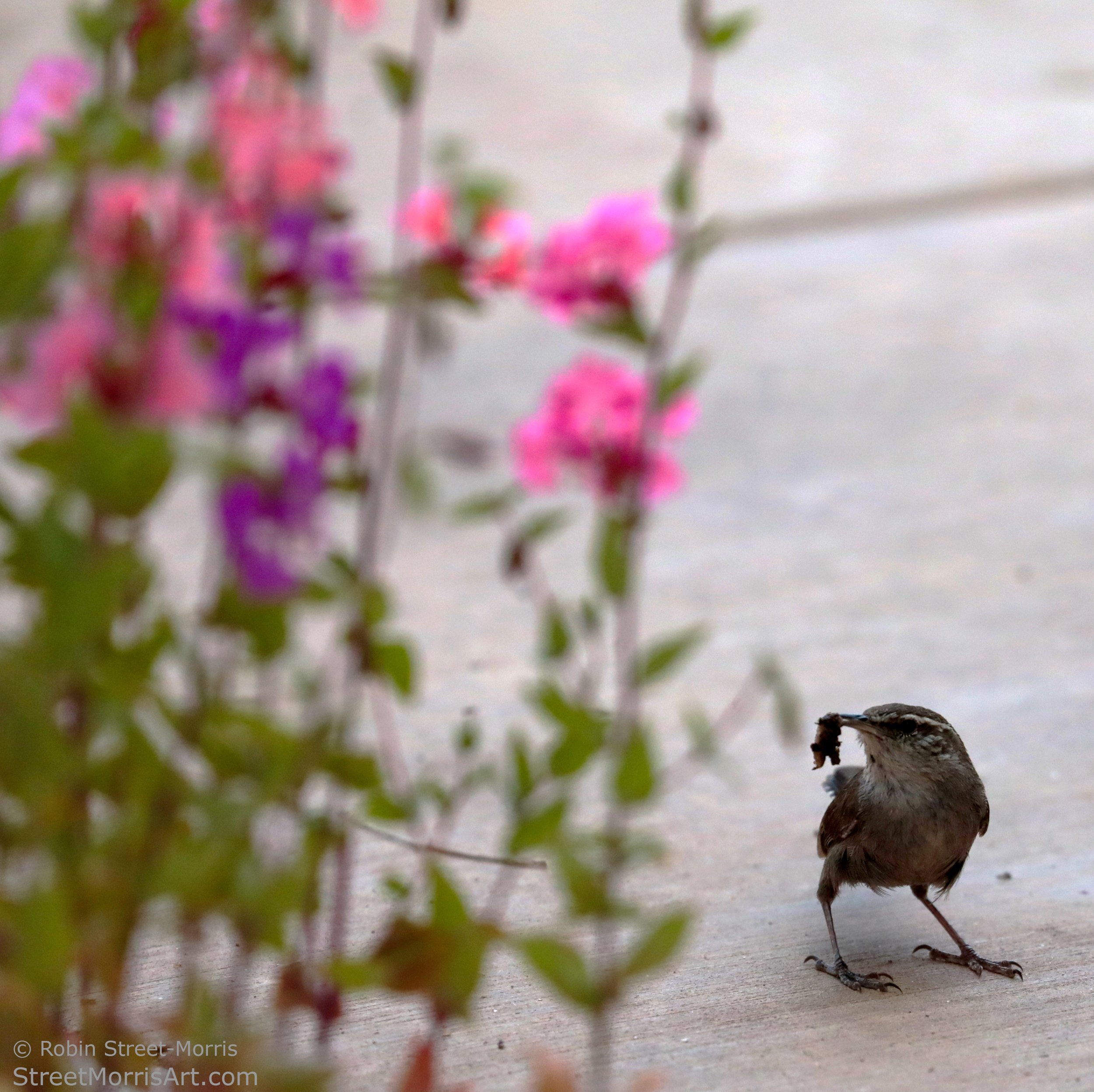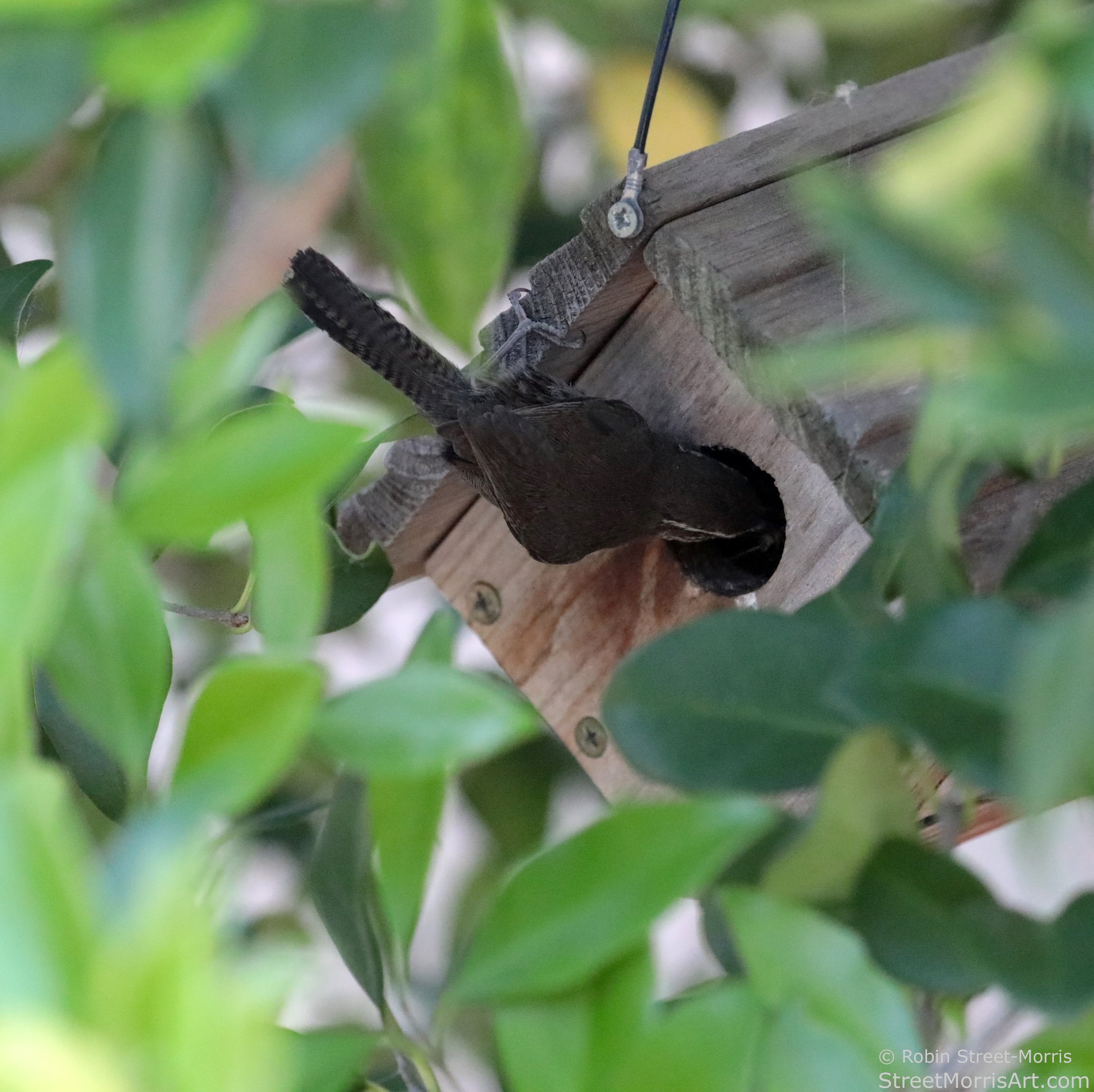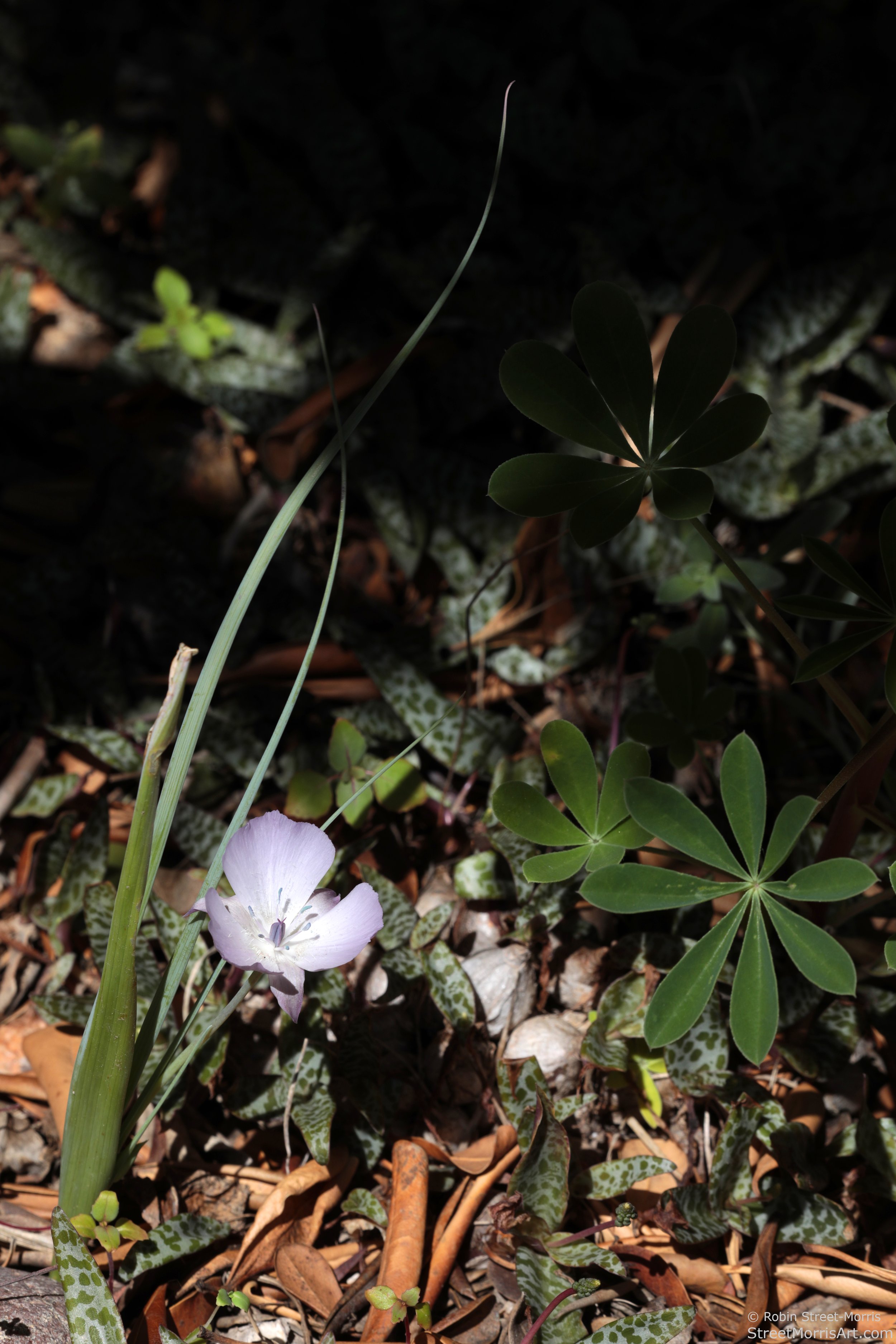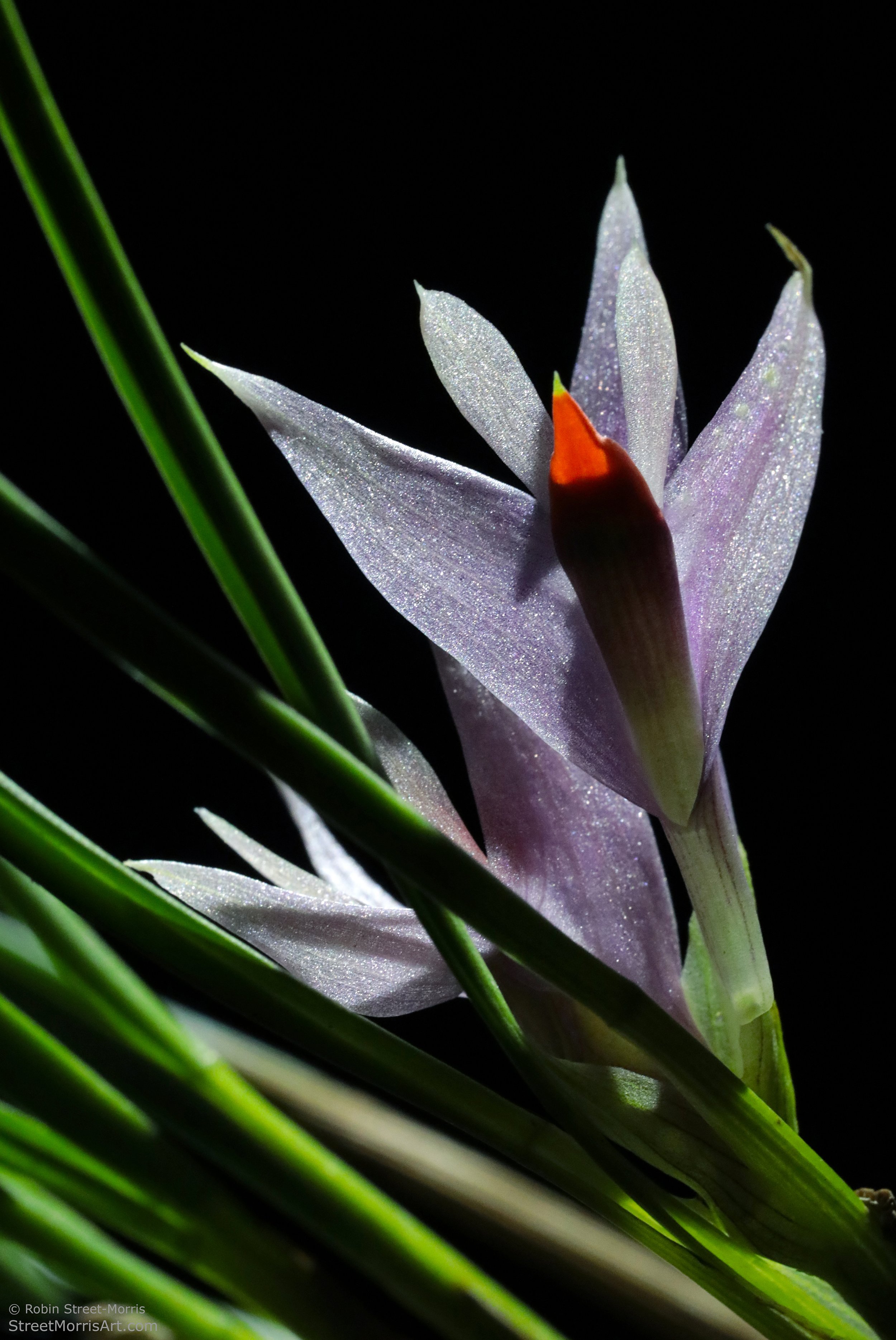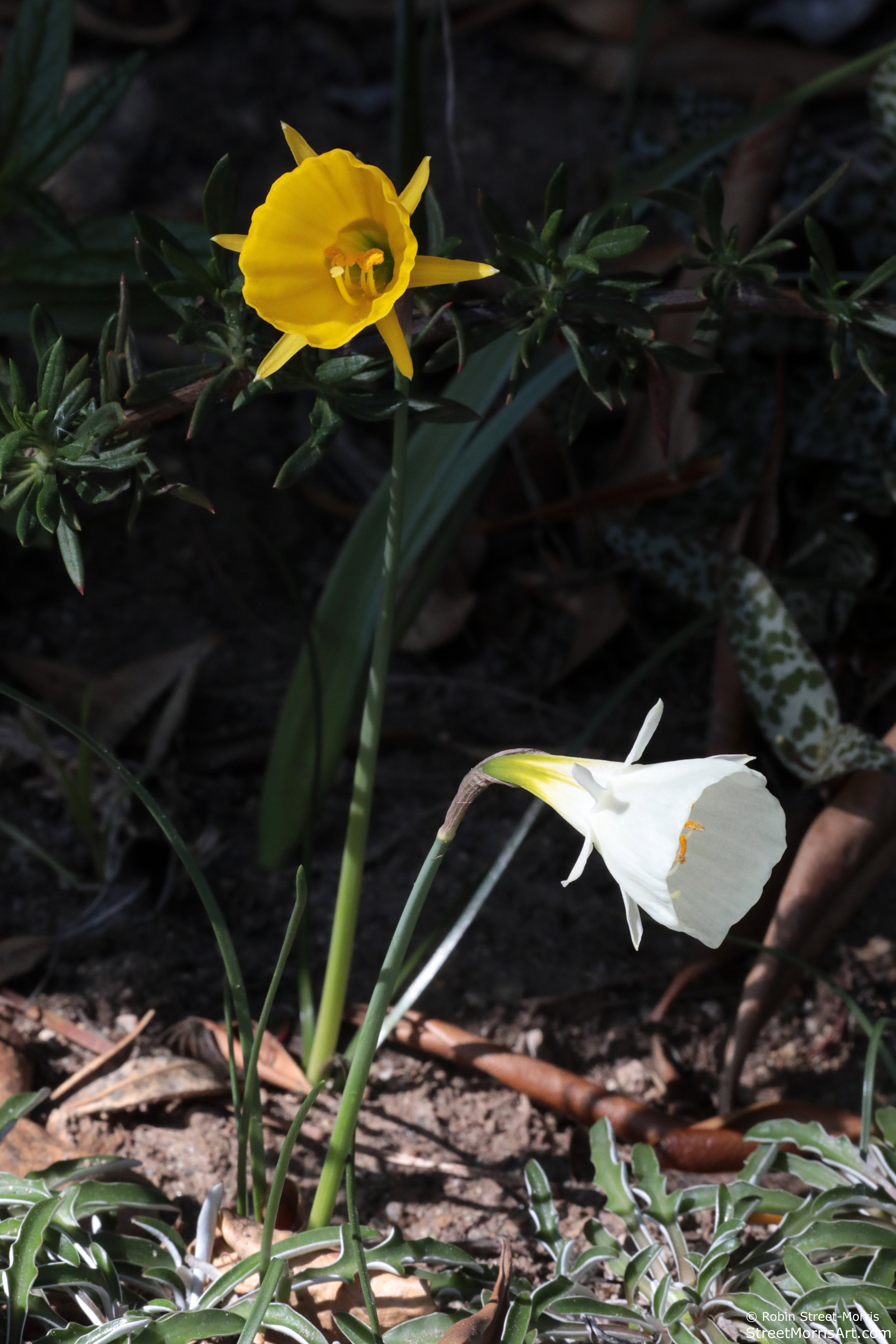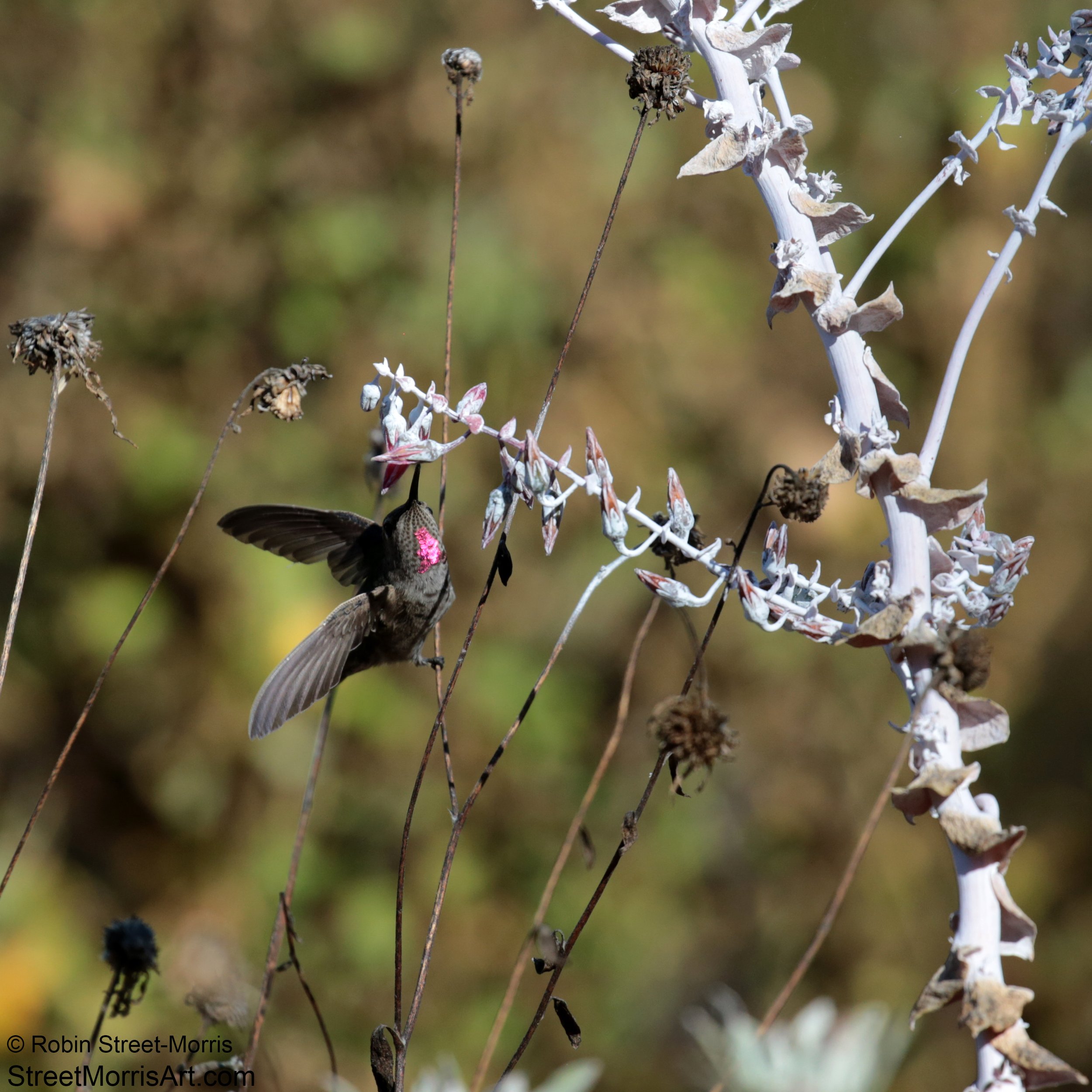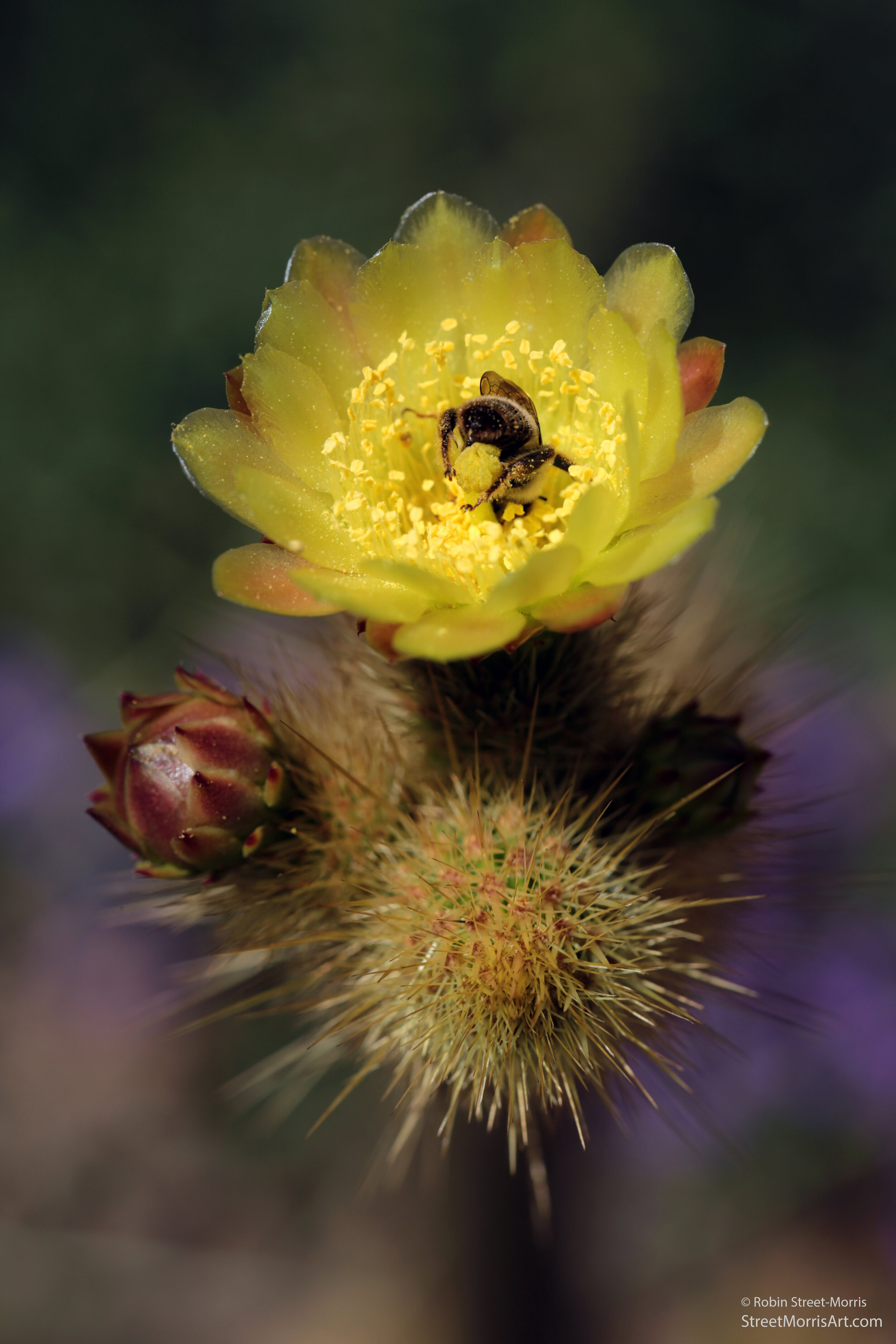Three Bewick’s wrens successfully fledged in the garden last week. It was incredible to see how quickly both parents would return to the nest box with insects plucked from nearby plants and around the foundation of the house. They were also busy hauling off their young’s droppings to keep the nest fresh. Insectivorous birds consume an estimated 400–500 million tons of prey annually.
San Diego gardening
A spring view
Here's a bit of the garden backlit by the setting Sun. The cheerful yellow flowers are California brittlebush (Encelia californica) and the pinks and purples in the back are elegant clarkias (Clarkia unguiculata) with other locally native annual wildflowers that self-sow.
Calliandra californica
A bit of spring at our small botanical garden
Selasphorus sasin working Kumara (Aloe) plicatilis
Echinocereus triglochidiatus
Lepanthes cascajalensis x Lepanthes pelvis
Babiana rubrocyanea
Calochortus uniflorus
Euphorbia misera
Aerangis fastuosa
Dendrobium violaceum
Leptosyne maritima
Selasphorus sasin working Agave desmettiana
Eschscholzia californica
These California poppies were nodding over the property line and would have been weed whacked, so I pruned them myself.
Echinopsis (Trichocereus) 'Fuente de Sangre'
Brassolaelia Sea Urchin 'Pinkie'
Phragmipedium Fritz Schomburg
Laelia Santa Barbara Sunset 'Showtime' HCC/AOS
Dudleya greenei
Agave shawii, Eriogonum fasciculatum and Bergerocactus emoryi
Freesia leichtlinii ssp. alba
Tillandsia purpurea from Andy’s Bromeliads
Moraea tripetala
Paphiopedilum fairrieanum
Narcissus bulbocodium
Encelia californica
Aloe aculeata appreciation
The Sun is out, but it’s not going to stay that way for long.
Welcoming wildlife
Wanting this bobcat to have a good life in our yards that border nearby preserves is why I rooted for AB-1322 via emails to elected officials. Predators like bobcats, mountain lions, coyotes and raptors are skilled hunters that too often fall victim to rodenticides that travel up the food chain.
This bobcat captured a midnight snack.
Presumably this is the same bobcat returning to continue the hunt.
Rufous/Allen’s hummingbird (Selasphorus sp.) working one of the Dudleya pulverulenta I planted on the slope a few years ago
Anna's hummingbird (Calypte anna) with Dudleya pulverulenta
Callianda x Sierra Starr® is a robust hybrid between Calliandra eriophylla (pink fairy duster) and Calliandra californica (Baja fairy duster) that keeps the hummingbirds very busy.
Great Basin western fence lizard (Sceloporus occidentalis longipes) on the house
Very adorable and tiny Baja California tree frogs (Pseudacris hypochondriaca) often find cover in our potted plants from Andy’s Bromeliads, in this case a Hohenbergia.
A southern pacific rattlesnake (Crotalus oreganus helleri) was eyeing me from beneath a chaparral mallow (Malacothamnus fasciculatus) I planted on the slope. Our yard and the preserve is clearly a great place for neighbors’ dogs to be permitted to run and dig off-leash.
greater roadrunner (Geococcyx californianus)
This may or may not be the racoon who flipped our container water garden sending the water lilies and lotuses everywhere. The garden is now caged.
chaparral yucca (Yucca whipplei) seed pods with full Moon
This is probably not my last post about cacti...
There don’t seem to be gloves thick enough for handling some of them. That’s why I frequently wear none to maximize my dexterity and instead use my BBQ tongs when I’m repotting them or moving them in the garden. They still nail me sometimes and I’m a little scared of my coastal cholla because we’ve had some disagreements. The funniest is certainly the time I flipped a fallen piece of it into my face with my hori-hori and it stuck to my chin. That’s probably the only selfie I should ever have bothered taking and yet I was too preoccupied with getting the cactus off of my face to think to.
San Diego barrel cactus is much tamer comparatively speaking and I adore this species. I’ve got buds on mine and many in the preserves are in flower. Toward sundown one can watch solitary cactus bees find blossoms to curl up in. This one may or may not have moved on after I saw it faceplant late in the day. Only one is visible in the shot below, but this flower had many Argentine ants swarming it and others nearby. Said invasive species makes life hard for the native pollinators and the cacti as well. These ants think nothing of attacking other small living things and I’ve wondered how often these bees get a restful night's sleep when the former are present (someone who studies them for a living surely knows).
San Diego barrel cactus (Ferocactus viridescens), Diadasia sp. and Argentine ant (Linepithema humile) in Los Peñasquitos Canyon Preserve
My golden cereus began blooming for the first time and it’s a hit with the native bees in particular. A friend of mine who was in school at the Rancho Santa Ana Botanic Garden (now the California Botanic Garden) brought it down the 15 from their nursery for me as a single stemmed plant. It’s grown its heart out since being planted and is now quite large with many branches.
Bergerocactus emoryi and Diadasia sp.
Here’re a couple of other recent beauties for the fun of it. The crimson one was purchased as Trichocereus ‘Fuente de Sangre’. Taxonomists have since said, “Um, actually, Trichocereus is really Echinopsis.” It’s chilling near some eastern Mojave buckwheat (Eriogonum fasciculatum var. foliolosum) and Aloe aculeata. Aloe peglerae and Aloe dorotheae are nearby with the latter being almost as bright as this flower. Wildflowers bloom around their skirts in season.
Echinopis ‘Fuente de Sangre’
There’s nothing wrong with spritzing one’s flowers for a photo op, but nature did it for me that morning. I wouldn’t be surprised if it’s the last time we see rain other than fog here until fall.
Echinocereus chloranthus
Parodia uebelmannianus f. flaviflorus
Echinopsis ‘Edwardian Lady’
And here’s one from the garden for those who can’t be brought over to the spiny side unless roses are involved. As part of our ongoing hillside project, I added a San Diego mountain lilac (Ceanothus cyaneus) in a one gallon pot last fall. If it survives its first hot summer (and the Argentine ants don’t farm mealybugs and scale around its roots) it should do well from there desiring no supplemental water. That’s a big “if,” but I planted it with a black sage (Salvia mellifera) and placed some large rocks around it in an attempt to keep its roots cool.




